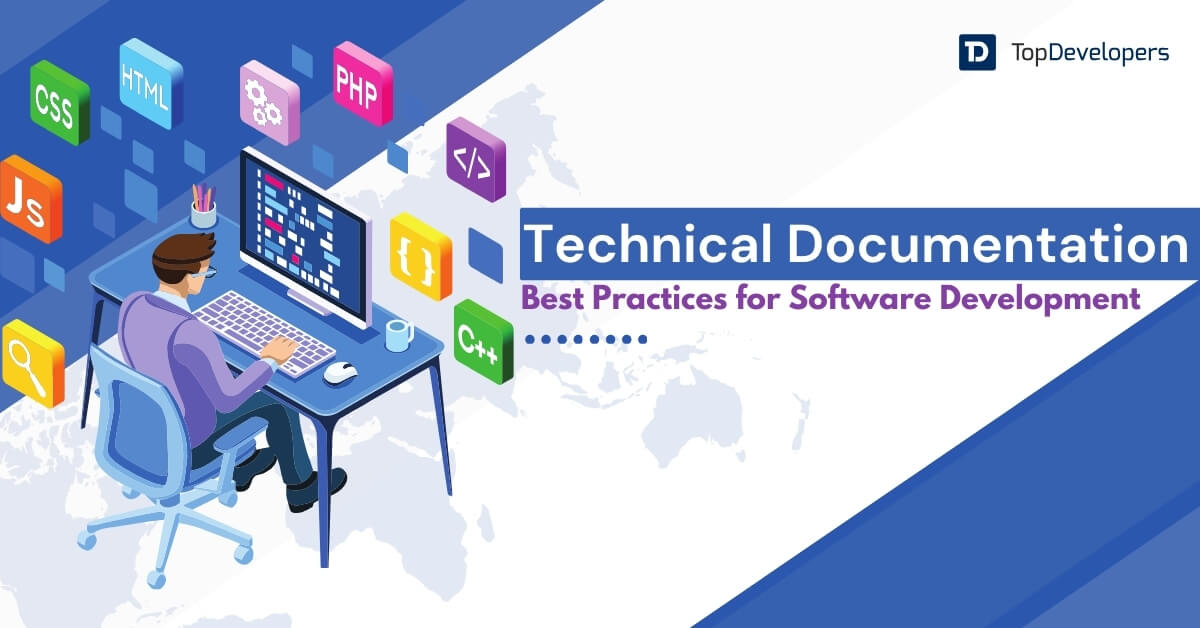
Software development is a capital-intensive endeavor, and the associated costs can quickly spiral out of control if not managed properly. According to a recent study by the Project Management Institute (PMI), a staggering 18% of software projects fail due to budget overruns. Moreover, the global average cost overrun for projects stands at a whopping 27%, translating to millions of dollars in wasted resources.
In the current business world where each cent counts, it is necessary for businesses to effectively manage their software development processes and avoid wasting valuable resources. The cutting of software development costs not only creates profits but also makes businesses allocate the savings to innovation, finally resulting in growth and winning the battle against competitors.
Now, let’s consider how to reduce costs and increase investment return via effective time management and other operational tactics during software development processes. We will see how one can move from using agile techniques to having collaborative tools and automating repetitive processes.
Table of Contents
- Effective Ways to Reduce Software Development Costs Without Losing Quality
- Outsource
- Project scope clarity
- MVP
- Prebuilt features
- Choose the right stack
- Implement DevOps
- Adopt lean approach
- Company over freelancer
- Good team management
- Standardization of processes
- Set priorities
- Automating tasks wherever possible
- Test-driven development approach
- Quality Assurance
- Utilize open-source software
- Use cloud computing
- Ensure good planning
- Save on Software Development Costs!
Effective Ways to Reduce Software Development Costs Without Losing Quality
There is no concrete figure for the budget to build any product because custom software development costs depend on myriad factors, but similarly, businesses may use a variety of approaches to improve their software development budget.
From outsourcing to low-cost countries to adopting agile methodologies and using collaborative tools, the ways of reducing expenses are limitless. By conducting a thorough analysis of their processes and identifying improvements where possible, businesses can reduce their operational costs and, consequently, increase their return on investment.
Here are some ways to reduce software development costs:
Outsource
Software development outsourcing is one of the most successful ways to reduce the budget because it allows firms to access a global talent pool at reduced costs. Also, businesses can thus acquire professionals who are proficient in specialized technologies or domains. There are many countries to outsource software development including India, Ukraine, and the Philippines, where labor expenses are considerably cheap, and businesses can enjoy great cost savings.
However, one should be careful in choosing a reliable and experienced outsourcing partner to ensure the quality of results as well as effective communication during the whole project life cycle. A proven way is to find the best software development companies through a reliable source such as an online directory.
Project scope clarity
A clean and precise creation of project scope is key to controlling the software development costs. At times, uncertainty or scope creeping can cause budget overruns, missed deadlines, and uncalled-for rework. Through requirements documenting, setting clear acceptance criteria, and engaging stakeholders, businesses will be able to manage the risks related to scope changes and make sure that development efforts contribute to introducing the desired functionality.
MVP
An MVP (Minimum Viable Product) approach will provide a game-changing reduction in estimating software development costs. Instead of developing a feature-rich application from the beginning, the MVP strategy is about creating a core set of features that solve the most crucial user problems. This lean approach not only expedites time-to-market but also enables businesses to validate their product hypotheses with real users and get the desired feedback for future updates.
Prebuilt features
By using off-the-shelf capabilities and integrating external components, businesses can pave the way to lower custom software development costs. Businesses should leverage existing solutions as opposed to re-inventing the wheel which may have been extensively tested and refined.
As these prebuilt features are already tested for performance and scalability, businesses do not need to spend extra for checking their ability. This will enable companies to focus on making their product unique by adding value and focusing on other parts of their projects.
Custom Software vs Off-the-Shelf Software: Which One is Better for You?
Choose the right stack
The technology stack is one of the most important decisions to be made that will greatly influence software development costs, including costs for bespoke software. Businesses will need to carefully consider their current and future needs, along with the availability of competent resources when selecting a technology stack. Factors such as scalability, performance, and compatibility with the existing systems should also be considered.
The right technology stack selection is of utmost importance for optimal cost of software development. Common options include MEAN (MongoDB, Express.js, Angular, Node.js) or MERN (MongoDB, Express.js, React, Node.js) for web applications, and Flutter or React Native for mobile app development. These top technology stacks for startups provide a complete suite of tools and models that speed up prototyping and shorten development cycles.
Especially, startups could opt for cloud-native architectures and utilize serverless computing platforms such as AWS Lambda or Azure Functions. These custom software solutions eliminate the need for provisioning and maintaining the servers hence saving infrastructure costs and allowing a pay-as-you-go pricing model which is of great benefit to resource-starved startups.
Implement DevOps
The next factor to reduce software development cost is the implementation of DevOps culture and software development lifecycle automation will help businesses to amortize software development costs easily. Through the automation of integration, testing, and deployment processes, companies can cut down on manual effort, decrease errors, and expedite time-to-market. The CI/CD pipelines can help automate the process so that code changes are built, tested, and deployed without the need for costly and time-consuming manual interventions.
Adopt lean approach
A lean approach can help you reduce price of software development and focusing on value delivery to customers would enhance the cost-effectiveness approach. Lean principles emphasize continuous improvement, customer needs first, and elimination of any not-so-important activities. By making use of tools such as Kanban boards, value stream mapping, and just-in-time development, companies can eliminate the bottlenecks and keep the development activities aligned with the business objectives, ultimately contributing to better estimation for software development and cost savings.
Company over freelancer
Freelancers can offer inexpensive services for specific tasks or short-term projects; however, software development specialists hired from top software company can be more cost-effective. The offshore hiring allows for the creation of a strong team culture to develop custom software, for the promotion of knowledge sharing and the use of the same coding standards and practices.
Freelance Developers or Offshore IT Company: Which one is the ideal?
Good team management
We can’t deny that having a skilled and competent team of developers can highly affect your software budget. The best way for businesses and startups to reduce software development costs is by outsourcing the task to the best software development team at a reputable offshore company to achieve project success. Businesses need to aim at employing both senior and junior developers, as this helps knowledge transfer and provides affordable talent acquisition.
Effective team management, including regular retrospectives, code reviews, and pair programming, facilitate collaboration, information sharing, and team productivity. Moreover, investing in continuous education and training opportunities can help the team members to be updated with the latest trends, technologies and best practices. They won’t need to spend a fortune on external training or consultancy services.
Standardization of processes
When software development life cycle process is standardized and defined beforehand, there’s less hassle related to how to work and what to work on. This is important to avoid any confusion and increase consistency to improve accuracy and efficiency. Thus, businesses save from any inconsistent process delays and can cut down their software development costs easily.
Through the setting of clearly defined coding conventions, testing procedures, and documentation rules, businesses could be able to have all team members follow the same standards which will ease collaboration and maintainability of the codebase.
Set priorities
Striking a balance between UX and visual design is the key requirement for the optimization of software development budget. Yes, the UI should be as good, but the UX and software application functionality should be the topmost priority, as these features directly affect user satisfaction and product adoption.
Through developing convenient and user-friendly interfaces, businesses can promote better user engagement and retention thus reducing the need for expensive user acquisition and support services. Also, spending on user research and usability testing at the beginning of the development process will point out possible problems and make it less expensive to fix them when they are discovered.
Automating tasks wherever possible
Automation of routine tasks through the use of tools for code generation, testing, and deployment can greatly decrease the expenditure of manual work and costs. Through the use of automation scripts and robotic process automation (RPA), businesses can automate different areas of custom software development lifecycle such as code compilation, unit testing, and deployment.
Moreover, utilizing low-code or no-code platforms will enable quicker software application development, minimizing the need for heavy coding and enabling rapid prototyping and iterations. Through automation of simple tasks, the development teams can spend more time on complex and valuable activities leading to an increase in productivity and decreased software development costs of manual processes.
Test-driven development approach
Making use of a test-driven development (TDD) approach which is an essential part of methodologies such as Agile methodology which can tremendously reduce the software development cost by catching bugs as early in the procedure of SDLC as possible. TDD includes the writing of automated tests before developing actual code, thus verifying that the software performs in accordance with specifications right from the start.
Through the incorporation of testing into the development process of software product, businesses can reduce the need for redoing costly rework and bug fixes in the future. Along with that, a full-featured automated test suite helps facilitate refactoring and code maintenance, thus lowering the risk of new errors occurring during enhancements and updates.
Quality Assurance
A strong QA process is a must for any software development project that aims to decrease its cost of software development in the long term. Businesses that detect and correct the errors at the earlier development stages will save themselves the high cost of fixing bugs after the deployment is complete and dealing with customer complaints and support requests.
Practices like code reviews, static code analysis, and automated testing frameworks can help find the issues before they go into production. Moreover, engaging QA experts in the whole process of development, not as a separate stage, can bring more quality to the software and reduce the costs of rework.
Utilize open-source software
Open-source software can be a good alternative to buying proprietary ones, especially for startups and small companies. Open-source projects often provide modules not only of high quality but also rich in features, this results in saving the in-house development costs.
Indeed, the selection of the right open-source software should be given great attention since the projects have to be active, well-documented, and supported by a strong community. In addition to that, software licensing problems and security vulnerabilities that are related to open-source software should be examined closely by the businesses.
Use cloud computing
One of the most critical benefits of cloud computing in reducing software development costs is the elimination of highly expensive on-site facilities and their associated maintenance costs. Cloud platforms like AWS, Microsoft Azure, and Google Cloud Platform offer a pay-as-you-go model where businesses are able to scale their resources up or down based on demand and not on overprovisioning.
Moreover, cloud vendors manage a lot of services, such as databases, queues, and serverless computing. They can be used to learn operational load and related expenditures for development teams. Companies can successfully implement this strategy by utilizing cloud services that allow them to spend less time and resources on infrastructure management and more on the development and delivery of their primary products.
Ensure good planning
Good planning and the development of a detailed project roadmap will help you reduce software development costs. A well-designed roadmap should indicate the goals, milestones, and deliverables of the project, which will be used in resource allocation and task prioritization.
The roadmaps can be tied to the corporate objectives by getting stakeholders from all departments, namely product management, marketing, and customer support on board. Continuous monitoring and alteration of the plan, if there is a change in the market or customer feedback, can drive the company to avoid costly deviations from the initial plan.
Save on Software Development Costs!
From leveraging the power of software development outsourcing and adopting agile methodologies to implementing DevOps practices and harnessing the benefits of cloud computing, you have fair chances to reduce software development costs. However, businesses need to approach these strategies with a holistic mindset, carefully considering the unique requirements and constraints of their company.
To summarize, take the first step towards cost optimization today by conducting a thorough assessment of your software product. Search for affordable countries to outsource software development, and then schedule a consultation with a couple of agencies from one country to talk about your product and budget. You further cut short the rest of the software companies and choose the best one to outsource your project. You can then implement all the essential steps to reduce software development costs and maximize returns on your software projects.
 Avantika Shergil
| May 9, 2024
Avantika Shergil
| May 9, 2024
Avantika Shergil is a technology enthusiast and thought leader with deep expertise in software development and web technologies. With over 8 years of experience analyzing and evaluating cutting-edge digital solutions, Avantika has a knack for demystifying complex tech trends. Her insights into modern programming frameworks, system architecture, and web innovation have empowered businesses to make informed decisions in the ever-evolving tech landscape. Avantika is passionate about bridging the gap between technology and business strategy, helping businesses build customized software and website, and understand about different tools to leverage effectively for their ventures. Explore her work for a unique perspective on the future of digital innovation.





